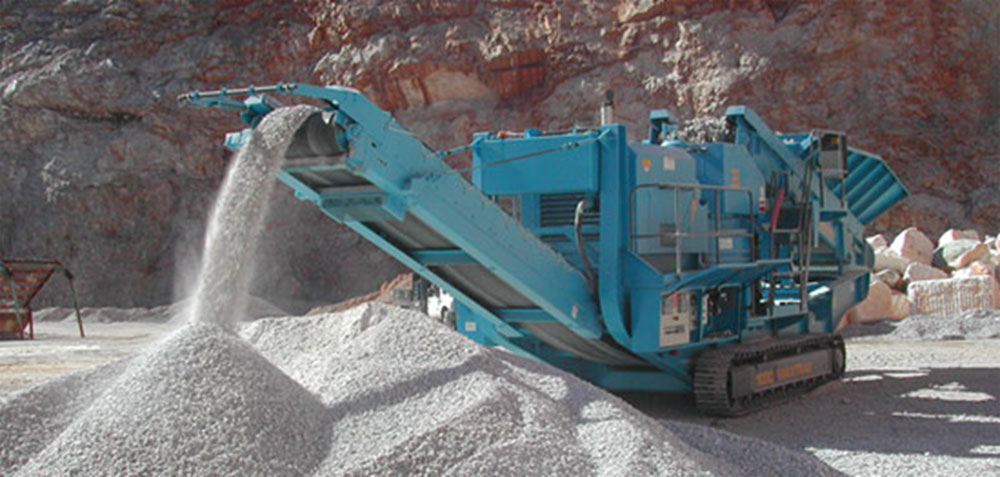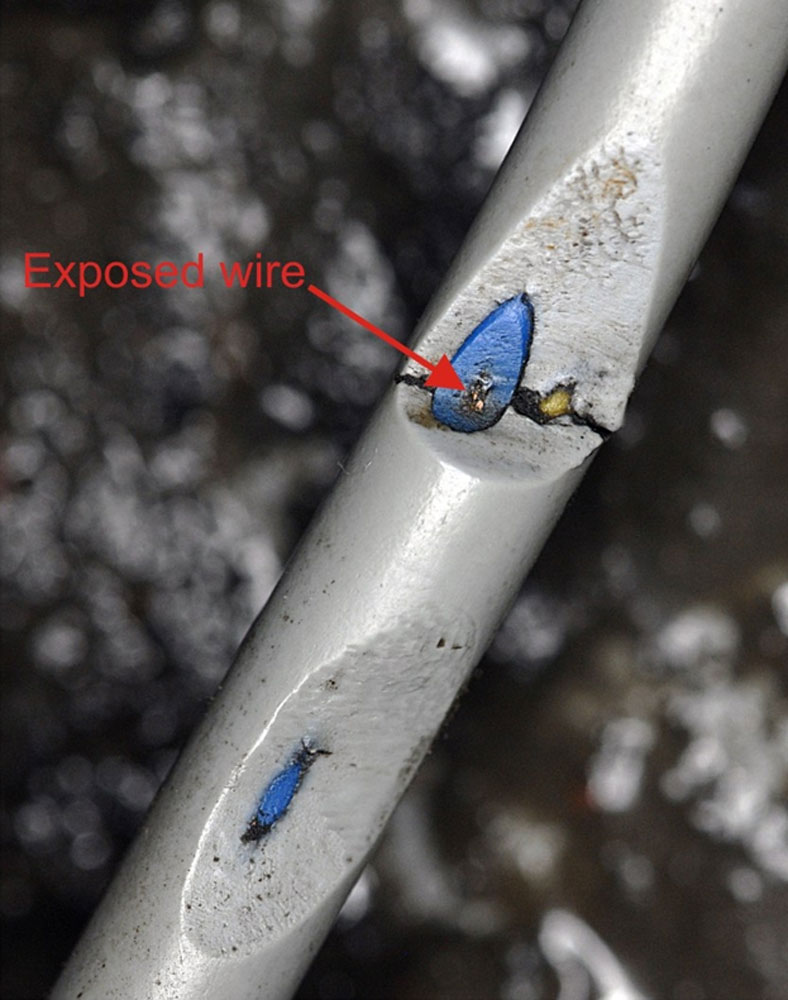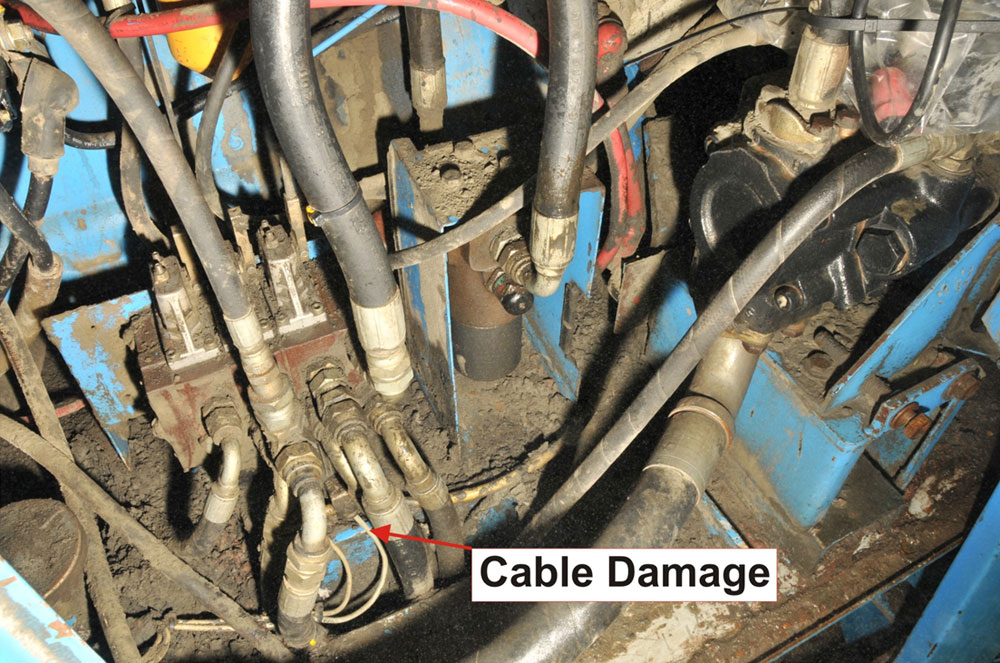Mobile crushing plant - unintended movement of tracks
Health and Safety Executive - Safety alert
Department Name:
Field Operations Directorate
Bulletin No:
FOD 4 - 2011
Issue Date:
2 November 2011
Target Audience:
Quarries, Mining, Construction, Demolition, Waste and Recycling and Others. For the attention of owners and operators of mobile crushing plant.
Key Issues:
There is potential, on some mobile crushers, for unintended movement of a machine track if an earth/ground fault occurs because of damage to the outer sheath and insulation of the electrical cable that controls the proportional control valve for the track. This can result in unintended movement of the machine track(s) and the potential for injuries from being struck by or trapped by the machine. Where damage/deterioration of the electrical control cables can lead to a risk of unintended movement, the actions outlined in this safety notice should be taken.
Introduction:

Investigation of a fatal incident by HSE has identified that unintended movement of some mobile crushers can occur when there is an earth/ground fault. On the machine involved in the incident, damage to the outer sheath and insulation of an electrical control cable connected to the solenoid actuator of a track valve had exposed a conductor. This created an intermittent earth/ground fault whenever the exposed part of the conductor contacted the metal framework of the machine. This fault caused a voltage change that acted as a signal to the solenoid operated directional valve controlling a machine track, leading to unintended movement of the track.
Background:

On the machine involved in the incident, proportional valves controlled the flow of hydraulic fluid to each track motor in order to control the speed and direction of movement. The valves were operated by electrical control modules, which allowed proportional control of the valves (ie the position of each valve was proportional to the input signal). Activation of the 'make ready' button on the control pendant energised the electrical control modules, enabling the valves to operate electrically by directional control buttons on the pendant. The operation of these buttons resulted in a change to the signal voltage to the valve, which reacted by altering the flow of hydraulic fluid to the track motor and, hence, the speed and direction of track movement.

At the time of the fatal incident, inspection/maintenance work was being undertaken on the machine when the right track of the machine moved unexpectedly trapping the worker. The 'make ready' button on the machine control pendant had been pressed enabling the ground drive system. Investigation found the electrical control cable connected to the electrical actuation unit of a track valve had an exposed conductor. This meant that there was an unsafe condition whereby if the 'make ready' button had been pressed and the exposed conductor came into contact with the machine chassis, the track would move.
Additional factors which led to the unintended movement of the tracks were -
- The outer sheath and insulation of the electrical control cable had become damaged as a result of rubbing against the machine chassis.
- There was potential for damage and deterioration of the electrical control cable given the type of cabling used, its location in the engine compartment and the environment it was subject to.
- An accumulation of product debris concealed the cable.
Action required:
The incident occurred on a BL Pegson 1000 Maxtrak cone crusher (year of manufacture 2001), though the risk may be present on any machine with a similar control system.
Owners should contact the manufacturer/ main agent/ supplier of their machine(s) in the first instance to identify if there is a risk of unintended movement of the machine through the electrical control system developing an earth/ground fault.
Where damage or degradation of electrical control cables can lead to a risk of unintended movement, the following measures should be taken to reduce the risk to as low as reasonably practicable:
- Install helical sleeving (or similar) to provide additional protection to the control cables and route/secure the cables away from the machine chassis and any other potential rubbing points; and
- Consider the installation of fault monitoring to reduce the likelihood of unintended movement should an earth/ground fault occur.
or
Take other appropriate measures.
If improved physical protection is not supplemented by fault monitoring, a system of inspection and maintenance to evaluate and monitor for any damage/degradation to the control circuit, including the electrical cables, will be an essential part of the overall maintenance regime for the machine.
Note: Whilst this safety notice focuses on unintended movement of the plant, it is important that any maintenance or similar work is undertaken following a safe system of work and an appropriate isolation procedure.
Relevant legal provisions:
- Sections 2 & 3 of Health and Safety at Work etc Act 1974
- Regulation 3 of Management of Health and Safety at Work Regulations 1999
- Regulations 5 & 6 of Provision and Use of Work Equipment Regulations 1998.
- Regulation 12 of Quarries Regulations 1999 (for equipment used in quarries).
References:
Clause 122 of HSE guidance L22 (third edition) 'Safe Use of Work Equipment Approved Code of Practice and Guidance' gives guidance on maintenance management. It states that the extent and complexity of maintenance can vary substantially from simple checks on basic equipment to integrated programmes for complex plant. In all circumstances, for maintenance to be effective it needs to be targeted at the parts of the work equipment where failure or deterioration could lead to health and safety risks. Maintenance should address those parts that have failed or are likely to deteriorate and lead to health and safety risks.
L118 'Health and Safety at Quarries' gives further information on the nature of inspection schemes in quarries and in particular highlights the need for adequate systematic inspection, maintenance and testing of equipment.
Further information:
Contact: Paul Grady (HM Specialist Inspector) for further details on 0113 283 4200.
General note:
Please pass this information to a colleague who may have this equipment.